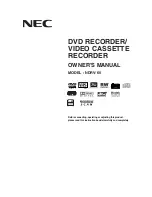
Confidential
Page 20
appropriately for each program you would like included in this output. Programs included in the
transport are highlighted with a green
background and a green arrow. On the “Modify
program mapping” dialog box, select “Yes” if you
wish this source to be included in the output. Be
mindful of the bandwidth limitations of your
chosen output transport. If you oversubscribe,
artifacts may occur on any program in that
transport. More on this topic below. The
Program Number field is used when you wish to
manually set the program number for this
program use this field. If not using the “auto”
selection for this field, be sure to choose the
program number carefully, there cannot be any
duplicate program numbers in a given transport.
The PMT pid and Elements are for expert use
only and should almost always be “auto”. If the
output is configured for US Cable or ATSC, there
are additional fields for PSIP information. These
fields contain data that is often displayed on the TV when the channel is first tuned. The Short Name
can be up to 7 characters. i.e. WXYZ-12. The Virtual Channel information will typically override the
Physical Channel information when displayed on a TV. The Virtual Channel can be a single digit integer
or hyphenated if supplying both a major and minor channel number. You can return to this dialog later
and modify these fields at any time. All changes will take effect immediately. You may need to retune
the TV to see the results.
Fine tuning the system
With each reconfiguration it is important to check the resources of the system to ensure the new
configuration is not overtaxing the system. Doing so may cause video artifacts. Here are a few places to
check after making a change, or if you see artifacts in your video output or HTML5 presentation.
CPU, Memory, and Disk Storage
These three are easily checked by monitoring the System/Info page of the Web UI or via FlexDM if you
have multiple systems. You may have to watch these for a few minutes to be sure there are no spikes
over time. A good rule of thumb is to keep each of these below 90%. CPU usage is primarily consumed
by the AV encoder. Using a lower frame rate or resolution will significantly reduce this. If using an
HTML5 presentation that has been recently modified, look for spikes in CPU usage during specific
transitions. Often these can be avoided by altering the presentation. The system can easily process two
720P/30 video streams when using a well behaved presentation combined with live AV decode/encode.
Up to 6 SD AV decode/encodes are also possible. West Pond does upgrade the CPUs from time to time
in an effort to expand the encoding capabilities of the device. Excess memory usage is rarely a problem.
If this becomes a problem it is likely a memory leak error in the HTML5 presentation. Disk storage is











































